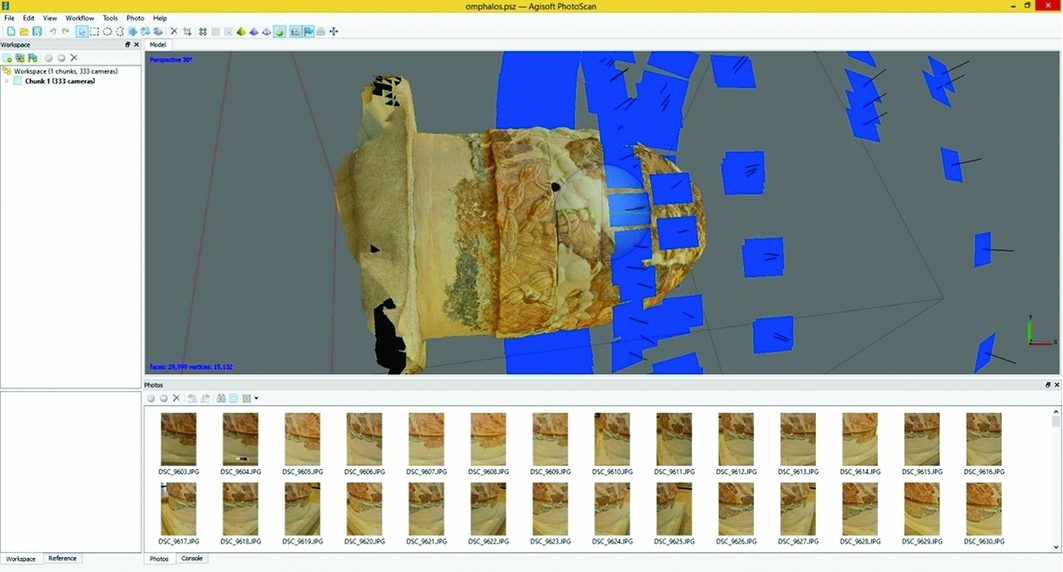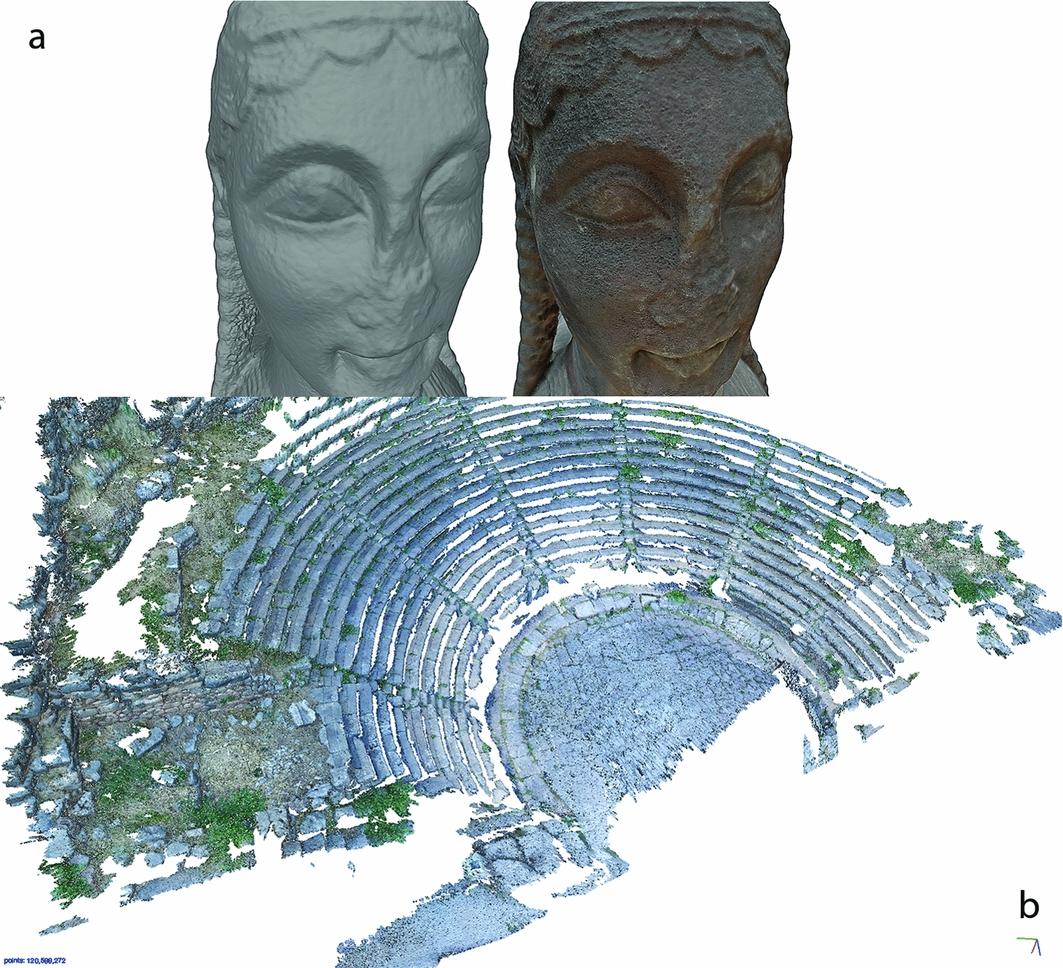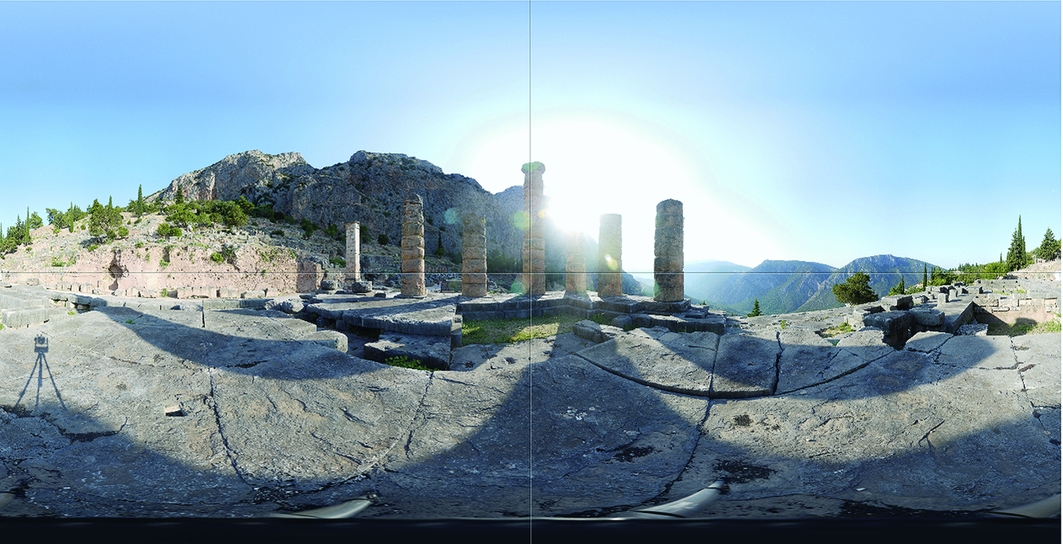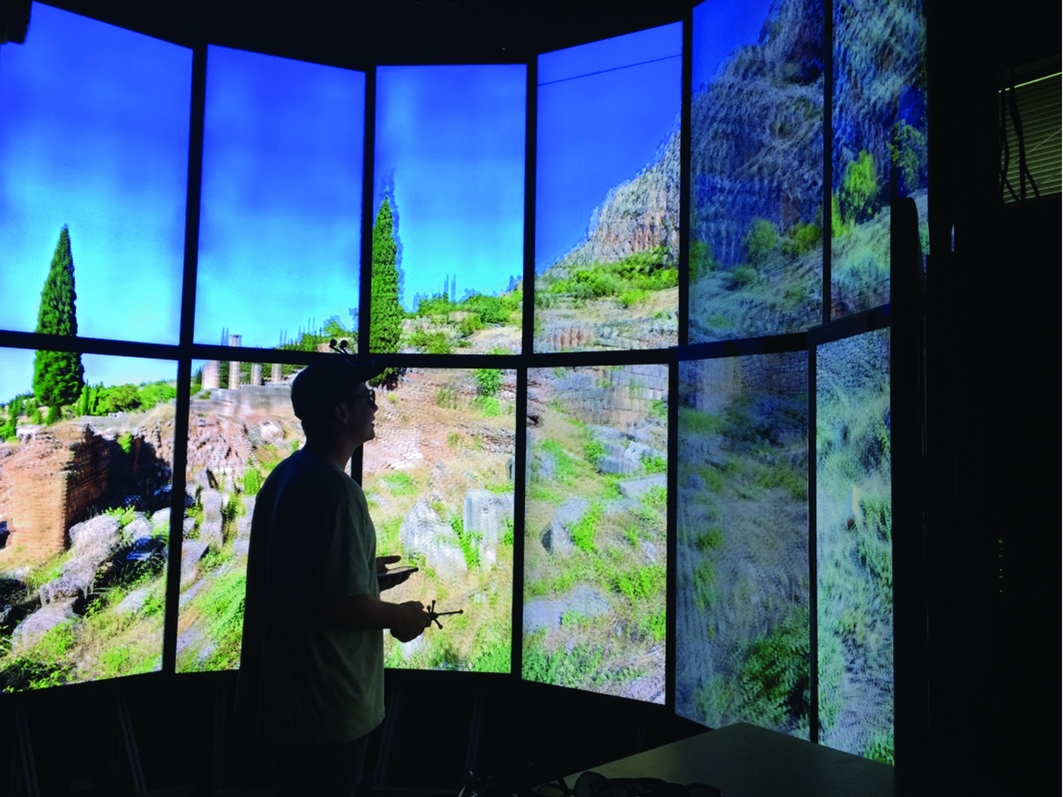Digital media and learning initiatives for virtual collaborative environments are contributing to the definition of new (sub-)disciplines in archaeological and heritage sciences. New nomenclature and terminology is emerging such as cyber archaeology, cyber archaeometry, virtual worlds and augmented and immersive realities; and all of them are related to museums and cultural heritage—tangible, intangible or natural (Forte Reference Forte2010; Liritzis et al. Reference Liritzis, Al-Otaibi, Volonakis and Drivaliari2015).
The research project ‘Digital Enterprise for Learning Practice of Heritage Initiative FOR Delphi’ (Delphi4Delphi) aims to address many of these topics. In particular, it focuses on the educational, research and social implications of digital heritage. The ongoing work presented here highlights the first large-scale interdisciplinary cyber-archaeology project to make use of structure from motion (SfM) and CAVEcam measurements of heritage monuments and artefacts in Greece on any significant scale (Levy Reference Levy2015).
Delphi was the most prestigious and authoritative oracle in the ancient world. Its reputation centred on the political decisions taken after consultation of the Oracle, especially during the period of colonisation of the Archaic period (c. eighth to sixth centuries BC), when cities sought her consent and guidance (Bommelaer Reference Bommelaer2015).
The main goal of the Delphi4Delphi project is to capture detailed 3D images of the major archaeological monuments at Delphi and artefacts in the Delphi Archaeological Museum in order to contribute to the 3D reconstruction of the sanctuary in support of research, conservation and tourism.
Two types of digital-photography-based recording systems were used in the 2015 season. The first method was SfM. This is a technique of spectral documentation (usually typical optical imaging), and refers to the process of making 3D structures from 2D image sequences. This constitutes recovering a scene's depth (the dimension that is not captured in a single typical 2D photo), and in recording it in a 3D data format (Pavlidis et al. Reference Pavlidis, Koutsoudis, Arnaoutoglou, Tsioukas and Chamzas2007; Doneus et al. Reference Doneus, Verhoeven, Fera, Briese, Kucera and Neubauer2011; Koutsoudis et al. Reference Koutsoudis, Vidmar and Arnaoutoglou2013) (Figures 1 & 2).

Figure 1. Structure from motion photography of the Omphalos, captured and cast into a 3D model.

Figure 2. 3D geometry and textured models with structure from motion from the Delphi site and archaeological museum: a) the head of the sphinx; b) the dense point cloud of part of the theatre (about 120 million points measured).
The second system involved the use of the 3D CAVEcam stereo photography system, which produces 3D-surrounding images of buildings and heritage sites. CAVEcam cameras capture 360 × 180o panoramic views (Figure 3–6). Both methods were used in a quick, non-invasive and affordable manner (DeFanti et al. Reference Defanti, Dawe, Sandin, Schulze, Otto, Girado, Kuester, Smarr and Rao2009; Smith et al. Reference Smith, Cutchin, Kooima, Ainsworth, Sandin, Schulze, Prudhomme, Kuester, Levy and Defanti2013).

Figure 3. Stitched CAVEcam imagery from one camera of the Temple of Apollo.

Figure 4. Stitched CAVEcam imagery from one camera of the interior of the Tholos.

Figure 5. Stitched CAVEcam imagery from one camera of the Sphinx of Naxos.

Figure 6. CAVEcam of Roman complex in the Qualcomm Institute, UCSD.
The monuments and artefacts recorded in 2015 as part of the Delphi4Delphi project include: the Temple of Apollo, the theatre, the gymnasium, the Sanctuary of Athena Pronaea (and the Tholos), the bronze charioteer and the marble sphinx, as well as decorative architectural elements of monuments such as those from the Treasury of the Siphnians.
The dataset generated during our first season totalled around 300GB. It will allow a detailed analysis of the ancient sanctuary and its material culture, including integration with archaeoastronomical studies of celestial phenomena prevailing at the time, the Oracle delivered her advice (Liritzis & Castro Reference Liritzis and Castro2013). The next stage of the research will include the use of balloons and drones to capture additional images of the site.
Acknowledgements
We thank the Ministry of Culture and Sports, Greece, for providing the necessary permit, and A. Psalti for facilitating our work at Delphi.








